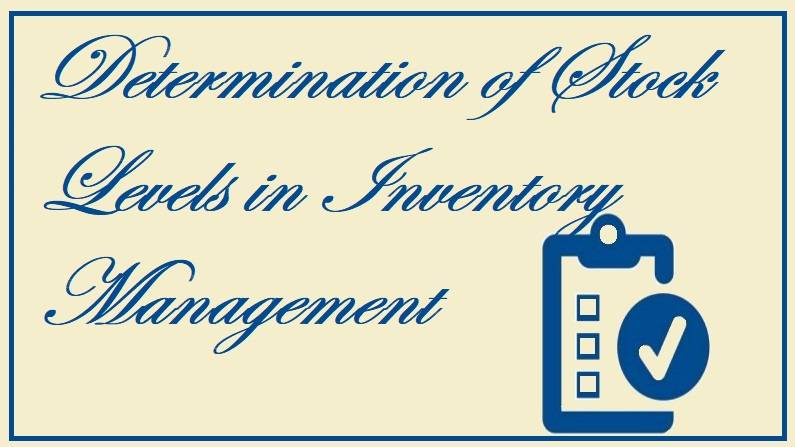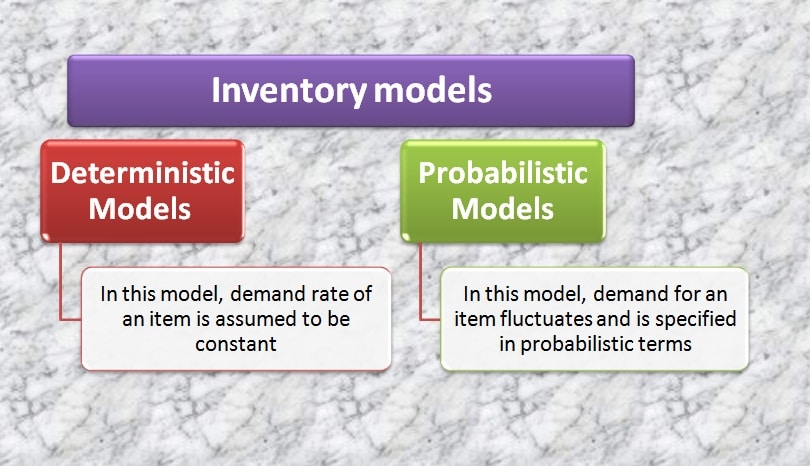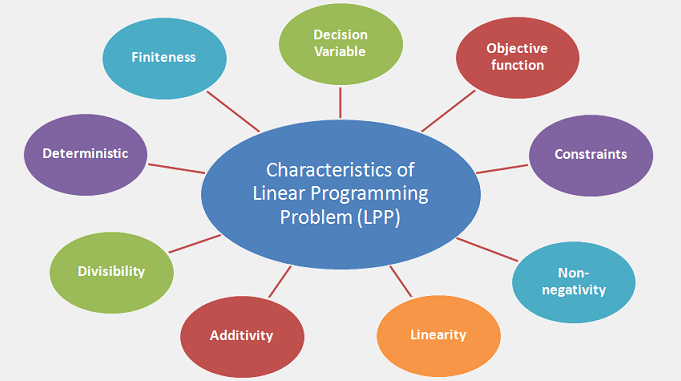
Determination of Stock Levels in Inventory Management:
Carrying too many and too little of inventories is detrimental to the firm. If the inventory level is too little, the firm will face frequent stock-outs involving heavy ordering costs and if the inventory level is too high it will be an unnecessary tie-up of capital. Therefore, efficient inventory management requires that a firm should maintain an optimum level of inventory where inventory costs are the minimum and at the same time there is no stock-out which may result in loss of sale or stoppage of production. As a result, the determination of stock levels in inventory management is an important aspect. Various stock levels are discussed as such.
(a) Minimum Level:
This represents the quantity that must be maintained in hand at all times. If stocks are less than the minimum level then the work will stop due to a shortage of materials. Following factors are taken into account while fixing minimum stock level:
Lead Time: A purchasing firm requires some time to process the order and time is also required by supplying firm to execute the order. The time taken in processing the order and then executing it is known as lead time.
Rate of Consumption: It is the average consumption of materials in the factory. The rate of consumption will be decided on the basis of past experiences and production plans.
Nature of Material: The nature of the material also affects the minimum level. If material is required only against special orders of customers then the minimum stock will not be required for such materials.
Minimum stock level = Re-ordering level − (Normal consumption × Normal Reorder period)
(b) Re-ordering Level:
When the quantity of materials reaches a certain figure then fresh order is sent to get materials again. The order is sent before the materials reach the minimum stock level. The reordering level is fixed between the minimum and maximum levels. The rate of consumption, number of days required to replenish the stock and maximum quantity of material required on any day are taken into account while fixing the re-ordering level.
Re-ordering Level = Maximum Consumption × Maximum Re-order period
(c) Maximum Level:
It is the quantity of materials beyond which a firm should not exceed its stocks. If the quantity exceeds the maximum level limit then it will be overstocking. A firm should avoid overstocking because it will result in high material costs.
Maximum Stock Level = Re-ordering Level + Re-ordering Quantity − (Minimum Consumption × Minimum Re-ordering period)
(d) Danger Level:
It is the level beyond which materials should not fall in any case. If a danger level arises then immediate steps should be taken to replenish the stock even if more cost is incurred in arranging the materials. If materials are not arranged immediately there is the possibility of a stoppage of work.
Danger Level = Average Consumption × Maximum reorder period for emergency purchases
(e) Average Stock Level:
The average stock level is calculated as such:
Average Stock level = Minimum Stock Level + ½ of Re-order quantity
(Source – Various books of college library)
Copyrighted Material © 2019 - 2024 Prinsli.com - All rights reserved
All content on this website is copyrighted. It is prohibited to copy, publish or distribute the content and images of this website through any website, book, newspaper, software, videos, YouTube Channel or any other medium without written permission. You are not authorized to alter, obscure or remove any proprietary information, copyright or logo from this Website in any way. If any of these rules are violated, it will be strongly protested and legal action will be taken.





it is well being and understandig the whole tools determination of the stock level how to overcome methods of inventory management thank you
Thanks for your valuable feedback…